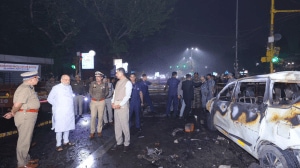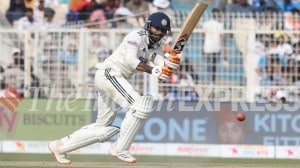HC order "brightens" up residents
MUMBAI, FEBRUARY 13: Chowpatty resident Ashwin Jajal's nights will be less brighter than they used to be. Not that he's complaining. The Mum...

MUMBAI, FEBRUARY 13: Chowpatty resident Ashwin Jajal’s nights will be less brighter than they used to be. Not that he’s complaining. The Mumbai High Court’s recent judgement ordering the Brihanmumbai Municipal Corporation (BMC) to switch off all neon signs after 11 pm has relieved residents of Chowpatty, who have learnt to live with the psychedelic glow of neon hoardings.
Jajal, who shifted to his fifth floor of Ganpat Bhuvan, Morvi Cross Lane, Chowpatty three years ago, has been living among as many as seven neon hoardings, which flash red, green and blue at intervals four seconds long – till 1 am. “It is a Catch-22 situation. If you draw curtains, you don’t get air. If you leave them open, you are blinded,” he says. Not that curtains serve any purpose; says advocate Sunil Mehta, “It is like sleeping in front of a TV set which is on, but not telecasting anything.”
Some residents learned to put up with it; others, like Jayant Tanna, have been writing to the BMC for the last 30 years, but to no avail.Jajal finally decided to move court asking for a complete ban on hoardings. The current court order will remain in effect till a comprehensive report is submitted. The next hearing is slated for April 27.
Said Agnello Perriera, business development, Aaren Advertising, the ruling will not adversely affect the hoardings’ industry. Although every second shop in upmarket localities may have neon boards, there are only 25 to 30 major neon hoardings all over the city. The exorbitant costs keep most potential advertisers away. A medium-sized neon hoarding costs around Rs 10 lakh to manufacture, and depending on the locality, rental charges vary between Rs 2 and Rs 6 lakh per year. Also, after 11 pm when the lights have to be switched off, the road traffic has already ebbed, so the order will make hardly any dent on advertisers. In fact, if these lights are hazardous, many feel that the judgement should have been effective during peak hours, and not after 11 pm. Debi Goenka, a Bombay Environmental Action Groupactivist, pointed to a Supreme Court decision banning hoardings on certain Delhi roads. He says the judgement should be made applicable in Mumbai as well.
Pereirra also refutes the health hazard threat. “The gas is sealed in thick tubes, and in the last ten years, not a single case of tube rupture or leakage has been reported,” he says. Also, the signs are at a height of 100 meters or more. But Madangopal Agarwal, another resident of Ganpat Bhuvan, points to the precariously dangling tubes on the hoarding opposite his window. During the monsoon, broken glass is a common sight on the terrace where the hoardings are displayed. Monsoon, incidentally, is the worst season for another reason – the signs get washed’ and glow at their brightest.
- 01
- 02
- 03
- 04
- 05































